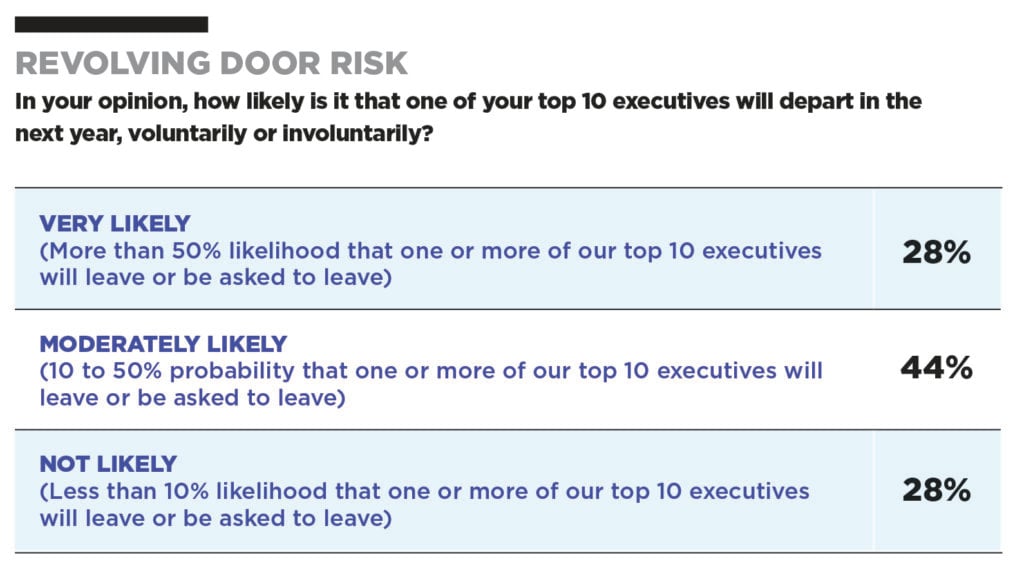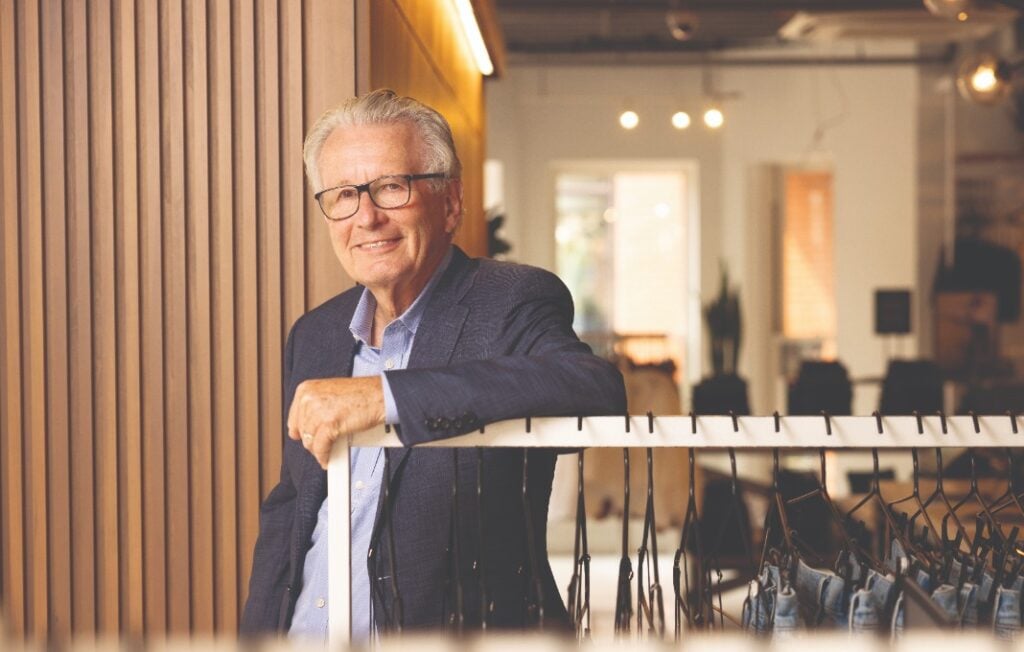Editor’s note: Over the past few decades, Raj Gupta served on the boards of 15 public and nine private companies (large, midsize and small, across multiple industries around the globe) and observed 35 or so CEOs in action. He’s also been CEO himself, guiding the transformation of specialty materials company Rohm and Haas through acquisitions and divestitures and the impact of the dot-com era bust to a legendarily difficult—but ultimately successful—sale to Dow Chemical at the height of the global financial crisis. During his decade as CEO there, the company was the 2nd-best performer in the S&P 500.
He recently ended a chairman stint guiding a challenging, decade-long turnaround of Delphi—the spun-out parts manufacturing arm of General Motors. Now Aptiv, it’s a $15.6 billion auto technology juggernaut. From its IPO in November 2011 to year end 2021, the company delivered 25 percent annual TSR. Gupta also recently retired as chairman of Avantor, where he helped build a global healthcare supplier with $7 billion in sales and enterprise value of $35.5 billion at the end of 2021. The company was originally acquired by private equity firm New Mountain Capital in mid-2010 for just $280 million—this represented the largest healthcare IPO ever on the NYSE in mid-2019.
Given his successful track record over the very long haul, Corporate Board Member decided to reach out to Gupta and ask him what big-picture advice he might have for other directors facing this current moment of volatility and uncertainty. He offers some thoughts, below.
Gupta will also be one of the speakers at our upcoming Boardroom Summit in New York, talking—live and in person—about his significant experience dealing with activists. He’s among a stellar group of incredible, experienced directors who will be on hand. Join us >
***
From 2010 to 2019 was one of the most stable periods in the economy in decades. There was global growth, there was low inflation, there was an ample supply of capital, valuation of companies and multiples were expanding, so everybody was feeling good. Technology was driving some new business models and creating new opportunities, and plenty of talent was available.
In that period of time, when boards and management and CEOs were dealing with situations, it was pretty predictable. You look at your customers, you look at your market, you look at your competition, and you look at where you can grow faster than the economy and faster than peers. It required a fairly methodical, steady approach to planning and delivering without any surprises.
Having said that, during this period there were a number of things that were happening behind the scenes. To start, shareholder concentration. Between the index funds and large, actively managed funds, the whole investor base was changing. PE was also emerging as major competition to public companies. The role of activists was becoming more and more prominent. In 2016 we started to hear some noises, whether it was trade issues with Mexico and China, cybersecurity, the emergence of ESG or the notion of stakeholders versus shareholders. Meanwhile, the number of public companies was declining. The actual business environment was very predictable.
It all changed so quickly. Starting in the spring of 2020, the pandemic seemed to trigger a number of huge shifts, and all at once a lot of the things that were in the background earlier in the decade have come to the forefront. Inflation is at a multiyear high. There is massive supply chain disruption, which is not over yet by any means. Interest rates are rising. There is the remote working environment and the changing preferences of the workforce amid a shortage of talent. Industry disruptions are accelerating, of course, whether it’s autos, energy, distribution or media. Natural disasters like floods, fires, earthquakes, pandemics and heat waves are more frequent. Dramatic changes are everywhere.
What I see today at the CEO and the board level is fatigue with all that they’ve dealt with in the past two and a half years, as well as not being sure exactly how to deal with all these rapidly coming changes and what it means for the company and how to navigate it.
I don’t have all the answers by any means. But, by accident or by design, somehow I have ended up in unique, high-profile situations filled with rapid changes and volatility throughout my career, including situations involving a number of activists, at Hewlett Packard, at Delphi, at Arconic. I’ve also served on the board of Vanguard for 16 years, and watched how they evolved organically, how they think about stewardship and governance as a long-term (forever) investor.
It has all shaped my views about what I think works and does not work, because not everything I’ve been involved with has worked perfectly. But it has given me a wide range of experiences to reflect on about the current challenges boards and CEOs face. Given this, Corporate Board Member asked me to share some thoughts about leading companies right now, and I hope you will find them helpful.
We’ll start by looking at four key areas: information, strategy, risk mitigation and trust.
1. Information: ‘An Outside-In View of The World’
First and foremost, you have to be sure the board and the CEO are getting what I call an outside-in view of the world. When there is this level of change, the only way you can weather it is by being aware of what’s coming, and that means changing and expanding how you get your information.
When business is stable, much of the view on the company comes from the inside-out—from management and from the usual group of advisors. That’s particularly true when a company has been performing well.
But when you have an external environment that’s changing dramatically and rapidly, you really must have a mindset that incorporates an outside-in view of the world. And where does it come from? It can come from numerous sources.
Obviously, it comes from your customers and your team. But it also comes from your shareholders, because now shareholders are much more alert with what’s going on with the competition, how your markets are changing and how they perceive your company. You need to hear from experts and thought leaders—you really can’t just rely on consultants or investment bankers. You must invite in some thought leaders who have experienced these kinds of disruptions in their lifetime: academics, former CEOs, longstanding customers and investors who have a long track record and an independent point of view. And, of course, you must rely on your peers at successful companies who are dealing with somewhat similar situations to hear how they’re dealing with them.
Board leaders and CEOs must think about who is on the board, and make sure they are adding value to the discussions, instead of just saying yay or nay to their recommendations. CEOs must be wary of feeling that they’ve “got it all right.” “Everybody is following my directions. I’m doing this great.” They must be sure they are looking over their shoulders all the time.
2. Strategy: ‘Incremental Is Not Going to Work’
The CEO and board must create bold strategy. Incremental is not going to work—by definition—when things are changing fast. But in order for the CEO to articulate and execute a bold strategy, they really have to have a very good team at the top, and a very engaged board who is really helping to shape it and will be supportive of the team, because when they are embarking on a transformation, they’re increasing risks. And when they’re taking higher risks, they need board support and the trust of their shareholders and their leadership team.
At Rohm and Haas, for instance, we were a company with 90 years in business, with just four CEOs in that 90-year period. It was a very technologically driven company. We discovered our products and sold them around the world, and had a very global mindset, enjoying one of the highest multiples in the industry. By the time I became CEO in 1998, I had worked in the U.S. for 10 years, in Europe for 15 years, and in Asia for five years. I knew a number of businesses over time. It was clear to me that a number of businesses that we were in were commoditizing. New competition was coming from China and other countries. Our differentiation was narrowing. The other thing I noticed was that in certain businesses, we had high margins, but we were a very small player. That’s not going to be the long-term position we want for the company.
I also noticed that a lot of our businesses were becoming highly cyclical, like auto and housing. Then, on top of that, there was a business of electronic materials (semiconductors and circuit boards), which was a rapidly growing market.
So we said, “Okay, how are we going to reposition this company, which is trading at good multiples, has a good reputation, but it is in need of significant change?” And that’s where, over a period of six months we articulated the strategy that began with the divestiture of a number of our legacy businesses, including the commoditizing businesses and some of the high-performing businesses as well. We also concluded that we were going to build the electronic materials business through acquisitions.
In six months (fall 1998 to spring 1999), we made three acquisitions for $6 billion. We went from 10,000 to 25,000 employees, from 35 manufacturing sites to 100, and brought in a new CEO and leadership team. And lo and behold, the dot-com crisis hit. The world fell apart. We were highly leveraged with $4 billion in debt. I wasn’t sure I was going to survive. I was a new CEO and I’d led most of these initiatives. But I firmly believed that it was important for us to make a bold move.
We were fortunate that we had 30 percent of the company owned by a family foundation. They trusted me. The board was engaged in all these decisions and we had a leadership team that believed we were doing the right thing. And believe it or not, it took us three years (2000–2003) to get the company back on track. That was like baptism under fire, but the rewards were clearly worth it.
3. Risk Mitigation: ‘Admit Your Mistake, Pivot, and Move On’
The third part is that you must understand what the risks are and how to mitigate them, because nothing goes according to plan. The new things that come in, or what you think is going to play out in a certain way doesn’t quite play out. The competitor behaves very differently than you predicted. So you have to be willing to say, “You didn’t get it right. Admit your mistake, pivot and move on.”
Tyco is a good example. When Ed Breen came in, the company was literally bankrupt, both financially and reputationally. It had all kinds of legal suits filed by the government and shareholders. He and his lead director, ex-CEO of DuPont Jack Krol—whom I have a lot of admiration for—both reached out to me to say, “Could you be enticed to join the Tyco board?” I said, “I need to sort the situation at Rohm and Haas. I’m not sure I’m ready to join another board. They said, “Okay, when you feel settled, we’ll come back to you.” So a year later, I joined the board.
The basis for Ed’s recruitment was that he is going to create another GE, a conglomerate with multiple businesses after the reputational and the financial aspects were fixed. But as he got into it and looked at those diverse and unrelated businesses, electronic materials, security, flow controls, healthcare, etc., he concluded, “Guys, this is not the right portfolio of businesses. We are not able to allocate resources properly and to manage this complexity well. We need to simplify and focus.” He sought the board’s views and got independent perspectives. This led to a two-step restructuring of Tyco.
Not many CEOs like to shrink their company—as a result most portfolio realignments don’t happen. But he took this on, took the time—and a billion-dollar up-front cost to execute it—to select the leaders, to build the boards. If you look at the record of Tyco over 14 years of Ed Breen as chair and CEO, it returned 728 percent while the S&P was up 150 percent.
4. Trust: ‘Tell Them Like It Is’
The final thing is really building a very trustworthy relationship with all key stakeholders: The owners, the employees, your customers and your board. They have to feel that you will tell it to them like it is rather than have different stories at different times or blame others for what happened. And I find that if you are able to do that, then you get their full support when things do not go according to plan.
The board at HP, for example, when Meg [Whitman] was CEO, they had a board “buddy” for each of their senior executives, whom they could reach out to for counseling, coaching or just a conversation. It wasn’t like everything had to be cleared with Meg. But it took courage to have that outside-in view, to connect the dots, create a “bold” strategy, get the alignment, get the team motivated, communicate honestly and frequently and give credit where credit is due.
CEO SELECTION: ‘The Most Important Job Boards Do’
When we talk about the right CEO to execute this kind of work, domain skills, smarts and track record are all important—but only table stakes. I believe it takes something beyond that to really execute and build trust and engage the people, recruit the board and recruit the talent they’ll need to thrive in times of radical change.
Selecting the right CEO is the most important job boards do. And hopefully, they only have to do it every five to seven years. But you do need to make thinking about it a regular habit. That is a very important part of the process, and it should be an ongoing process for every board. I remember at Rohm and Haas, from the day I became CEO, at least twice a year I used to update the board as to who were the candidates for my succession.
Boards tend to rely largely on the incumbent CEO for a recommendation. I disagree with that approach. They must get the CEO to be an active participant, but the board ought to own the selection process, whether in form of a committee or from the whole board.
Often, if you have an incumbent, especially a successful incumbent, they’re likely to have a preference for somebody who will not be too disruptive, who thinks like them, has aligned with them, and will continue what they’ve started or what the company is doing. They tend not to be the ones who are really going to be bold and independent thinkers. For boards, what’s essential is defining the profile of the skills you need for the future, expanding the view of the pool, both from inside and outside, and being willing to engage and spend time with the senior executives inside.
The CEO you select must be—I’ll say it again here—able to look outside and be very open to inputs from others, including board members. They must not be afraid to build a very strong team—a lot of people want to have just a team that follows them instead of challenges them. Those are important soft skills for CEOs. They must have that mindset.
Many times I’ve seen that when you have a very strong CEO, what the board hears is what the CEO wants them to know, and the exposure to the senior management or independent view of what’s really going on in the company is extremely limited. That’s a red flag for me.
You also need a true pay-for-performance culture—that’s the other part. In several situations I’ve seen, management was always undershooting targets and achieving them, and the company was still paying out big cash bonuses. Down the road, if you look at the company’s history over 10 years, it underperformed its peers in terms of value creation.
So, how do you create this culture that you are really striving for the best you can do as opposed to just being average?
If you’re looking for a great example, the CEO transitions at Avantor are good ones. PE firm New Mountain Capital (NMC) acquired it in mid-2010. We had two CEO transitions until Michael Stubblefield joined in spring 2014. He executed superbly well, which led to increased investment and acquisitions eventually being listed on NYSE in mid-2019. It has continued to thrive.
Final Thoughts: ‘Be More Focused’
More change is coming. Supply chain disruption and talent availability are the two things that are really on the minds of the board. In addition, don’t underestimate cyber security, artificial intelligence, and all the new things that are emerging, and the new competition that’s coming.
The geopolitics and geopolitical implications of CEO and board decision-making are going to be more important long-term than in the past. If you look at the top 500 U.S. companies in the world, maybe two decades back, 70 percent of sales were in the U.S., and 20 percent in Europe and 10 percent in Asia and Latin America. Today, it’s probably 35 percent in the U.S., 30 percent in Europe, and 35 percent in Asia and Latin America. You need to really look at the world with a very different lens.
When I was CEO, everybody wanted to know: “How big is your business in China and how fast is it growing?” Today, if you talk to investors, they say, “How exposed are you to China, and how are you going to deal with it?” Making those conscious decisions about where you’re going to invest, where you’re going to play and how you’re going to manage will be much more important decisions that CEOs will be asked to make. This may lead to more focus of the portfolio, more focus on geography, more control of your supply chains and the ability to retain the best, diverse talent.
I think we might see a trend toward more independence, more focused companies, rather than an everywhere, everything approach. That doesn’t mean you’re not going to search for new territory, but you must be more thoughtful. For example, at Aptiv (formerly Delphi), very early on we decided that we were not going to be participating in the Russian market. We didn’t think it was ever going to be big or stable. The same thing with the Latin American market or Australian market.
We basically made choices: We’re going to be invested in Europe, Korea, China and the United States. That’s going to be our focus. And that’s where 95 percent of their revenues are. Making these kinds of conscious decisions is going to be important.
It’s a time to sit back, keep an outside-in point of view, rethink the portfolio, rethink the geography, rethink how you are going to manage your supply chains and manage your talent so that you’re in the best position to ride this out. We’re likely to be in this new environment for a while. I’m not saying be cautious. But I am saying be more focused.






